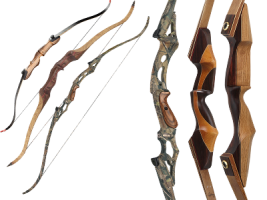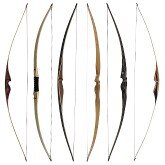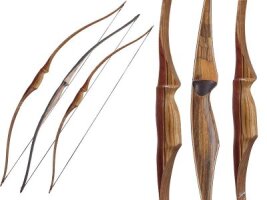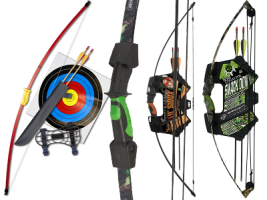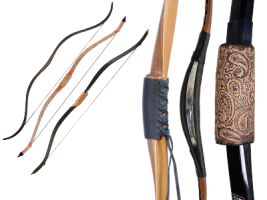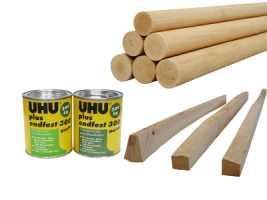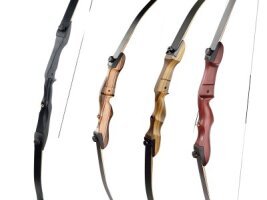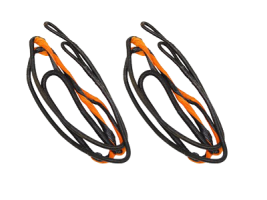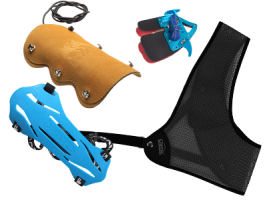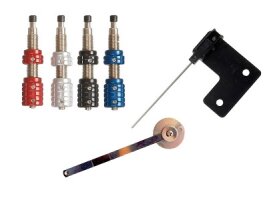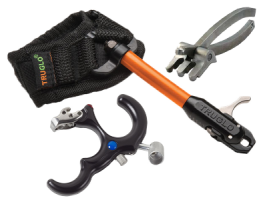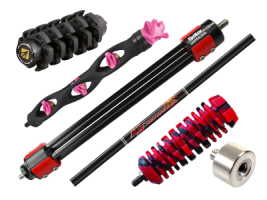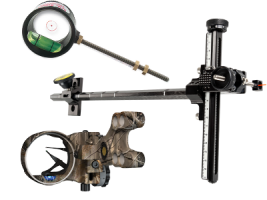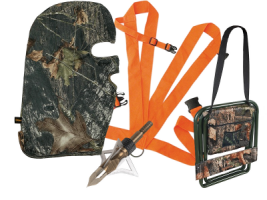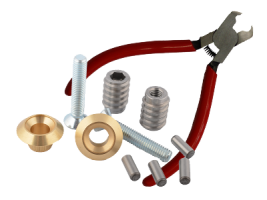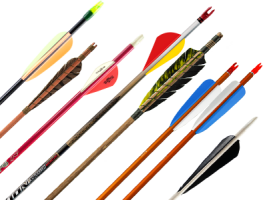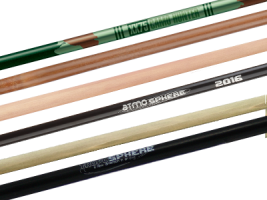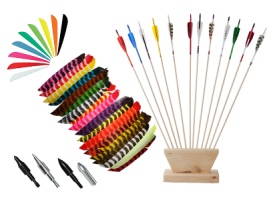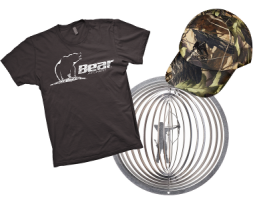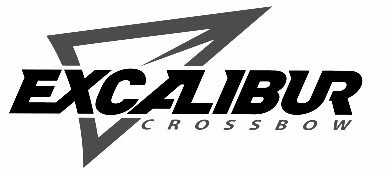The release: bow accessories for compound archers
A mechanical release aid is almost indispensable for archery with a compound bow. For precise arrow release, the bowstring must be released as quickly and cleanly as possible. A release for compound bows can do what even the hand of a professional archer can barely achieve: it releases the string quickly and straight, so that hardly any lateral vibrations can develop as the bow shoots forwards.
Which one is the most suitable depends on the experience of the respective compound bow archer and their individual movement sequence. Either a pincer release, a cascade release, a trigger release or a back tension release can be selected.
In addition to high-quality releases, both compound and recurve archers will find everything they need for their archery here at archery-shop.co.uk. From first-class sports bows, recurve bows, compound bows and longbows to crossbows and limbs to essential archery accessories such as arrow rests, arrow pullers, clickers, tabs, shafts and limb protectors, we have a wide range of products for all archery enthusiasts.
Three release types for optimum arrow release
In principle, every release for the bow works in a similar way. There is a claw on the release into which the string loop is hooked. The archer decides for himself when the string should release by pressing the trigger. The only exceptions are back-tension releases, where the mechanism is triggered by a specific movement that releases the string quickly and cleanly. Three types are distinguished according to their release mechanisms. So every shooter can find the right one.
The pincer release is particularly safe and is often used by less experienced archers. The strap is attached to the wrist so that the release cannot be accidentally let go. The release mechanism is operated with the finger, similar to a trigger on a rifle.
When using a thumb or trigger release, the safety, as the name suggests, is released with the thumb. For optimum comfort, the pressure point can be adjusted for most releases. This gives the shooter optimum control when aiming and shooting. Cascade releases, on the other hand, only release when the previously secured trigger is released again. However, the movement of the thumb must be in the opposite direction to that of the pull arm.
The backtension release is ideal for more experienced compound shooters. It adapts to the natural movement sequence and can be individually adjusted to the strength of the respective archer. The principle by which the shot is released is based on certain movements: Either the angle that the release has to the string can be changed slightly or the archer increases his back tension and thereby also the pulling force and so the shot is released. This release is a must for every professional compound archer.
Release manufacturer introduced
As archery with the release should be as intuitive as possible, choosing the right model is particularly important. It should adapt optimally to the archer and their movement sequence. At archery-shop.co.uk you will find high-quality releases from numerous manufacturers such as ALLEN, STRONGBOW, COBRA, JIM FLETCHER, SCOTT, SPIGARELLI, SPOT-HOGG and CARTER. Among the products from these manufacturers, you can discover both a simple and solid handstrap release for archery-shop.co.uk beginners as well as excellent backtension releases for professionals.
Jim Fletcher also offers excellent handstrap releases for professional archery. The companies Carter and Scott have specialised in first-class target releases and produce these in various designs. So you can find exactly the release that suits your technique perfectly.
As a compound shooter, you can't avoid a release, because a compound bow exerts much greater forces on the bow and string than a traditional bow. In addition, the string angle is so tapered that it is no longer possible to shoot cleanly with your fingers. A release is used here that grips the string or the string loop attached to it like a kind of ‘pincer’. This allows the shooter to pull out and release the string without any problems.
A distinction is made between three variants based on their release mechanisms.
The pincer release provides extra safety, as it is attached to the wrist with a strap so that the release cannot be triggered accidentally.
The so-called thumb or trigger release is triggered by the thumb for optimum control when aiming.
In contrast, cascade releases are only triggered when the previously secured trigger is released again. However, this requires a thumb movement in the opposite direction to the movement of the pull arm.
Experienced compound shooters like to use the back-tension release due to the many individual setting options. This only releases after a certain sequence of movements, which requires some experience.
Release accessories are mainly string loops, thumb rollers or supports. Pliers for attaching loops, wrist straps and finger rests are also a sensible purchase. They are available separately and can be easily replaced if worn or damaged.


